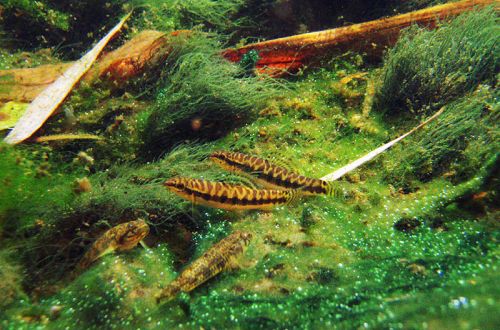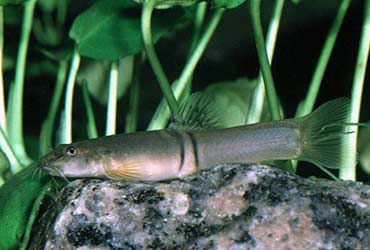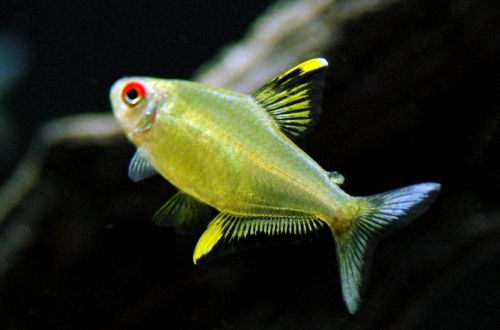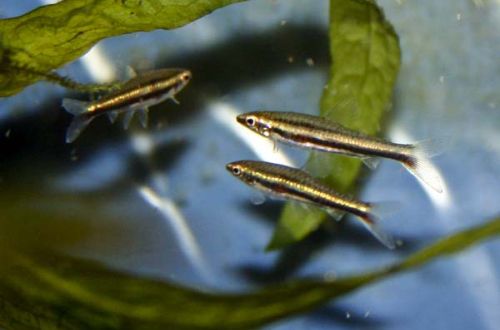
Acanthocobitis zonalternans
Acanthocobitis zonalternans, scientific name Acanthocobitis zonalternans, belongs to the Nemacheilidae family. Peaceful calm fish with a difficult to pronounce name. Quite popular in the aquarium hobby, compatible with many tropical fish species, easy to keep, breeding is possible.

vsebina
Habitat
Comes from Southeast Asia. The habitat covers the territory of Eastern India (Manipur state), Burma, the western part of Thailand and mainland Malaysia. It occurs in a wide variety of biotopes, from small mountain streams to wetlands of rivers. The typical terrain is flowing water, pebbly soil and numerous snags from fallen branches and tree trunks.
Kratke informacije:
- Prostornina akvarija - od 50 litrov.
- Temperatura – 20-25°C
- Vrednost pH - 6.0-7.5
- Trdota vode – mehka (2-10 dGH)
- Vrsta podlage - katera koli
- Osvetlitev - katera koli
- Somornica – ne
- Gibanje vode - poljubno
- Velikost rib je 6-7 cm.
- Prehrana - poljubna
- Temperament - miroljuben
- Vsebina v skupini najmanj 8–10 posameznikov
Opis
Adult individuals reach a length of about 7–8 cm. The body is elongated, the fins are relatively short. Near the mouth are sensitive antennae, with the help of which the fish searches for food at the bottom. Females are slightly larger, males have yellow or reddish pectoral fins. In general, the color is gray with a dark pattern. Depending on the area, the ornament may vary.
Hrana
In a home aquarium, you can serve dry food in the form of sinking flakes and granules. The diet must be diluted with live or frozen foods, such as daphnia, brine shrimp, bloodworms.
Vzdrževanje in nega, ureditev akvarija
The optimal size of the aquarium for a group of 8-10 fish starts from 50 liters. The design is arbitrary, the main thing is to provide several suitable shelters. They can be low broad-leaved plants, various snags, crevices and grottoes from heaps of stones, as well as other decorative elements. Indian almond leaves, oak or beech leaves are used to give the water a brown tint characteristic of its natural habitat.
Since Acanthocobitis zonalternans comes from flowing water bodies, special attention must be paid to water quality. Organic waste (food leftovers, excrement, etc.) should be removed regularly, part of the water should be renewed weekly (30-50% of the volume) with fresh water and the recommended pH and dGH values should be maintained.
Vedenje in združljivost
Peaceful calm fish in relation to other species. Small skirmishes may occur between Kindred, but this is a normal process of interaction between them. Such skirmishes never lead to injury. Compatible with many non-aggressive and non-territorial species of comparable size.
Vzreja / vzreja
The fish are not commercially bred, most are still caught from the wild. However, it is quite possible to get offspring from wild specimens of Acanthocobitis. Fish tend to eat their own caviar and do not show parental care, so it is advisable to spawn in a separate aquarium. To protect the eggs, the bottom is covered with balls and / or
covered with fine mesh. Thus, they become inaccessible to adult fish. The presence of registration is not critical. The water conditions should match those of the main tank. The minimum set of equipment consists of a heater, a simple lighting system and an airlift filter with a sponge.
With the onset of the breeding season, the most complete females are transplanted into a spawning aquarium along with several males. The latter will compete with each other, it may be necessary to leave only one, and transplant the rest back. At the end of spawning, the fish are transplanted. In total, about 300 eggs will be laid from one female. The fry appear the very next day. At first, they feed on the remnants of the yolk sac, then they will begin to take microscopic food, for example, ciliates and Artemia nauplii.
Ribje bolezni
Po svoji naravi so neokrasne vrste rib, ki so blizu svojim divjim sorodnikom, precej odporne, imajo visoko odpornost in odpornost na različne bolezni. Zdravstvene težave so lahko posledica neustreznih razmer, zato pred začetkom zdravljenja preverite kakovost in parametre vode. Po potrebi spravite vse vrednosti v normalno stanje in šele nato po potrebi pričnite z zdravljenjem. Preberite več o boleznih, njihovih simptomih in metodah zdravljenja v poglavju "Bolezni akvarijskih rib".





